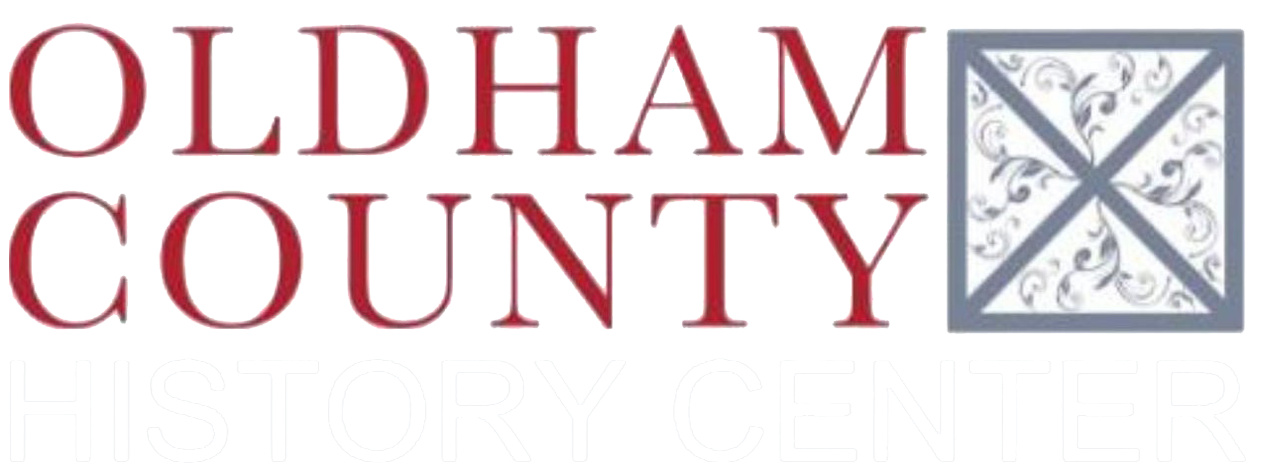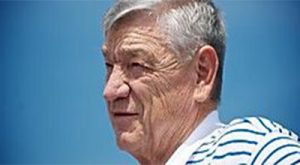2024 June Living Treasure — Amalia Espinoza
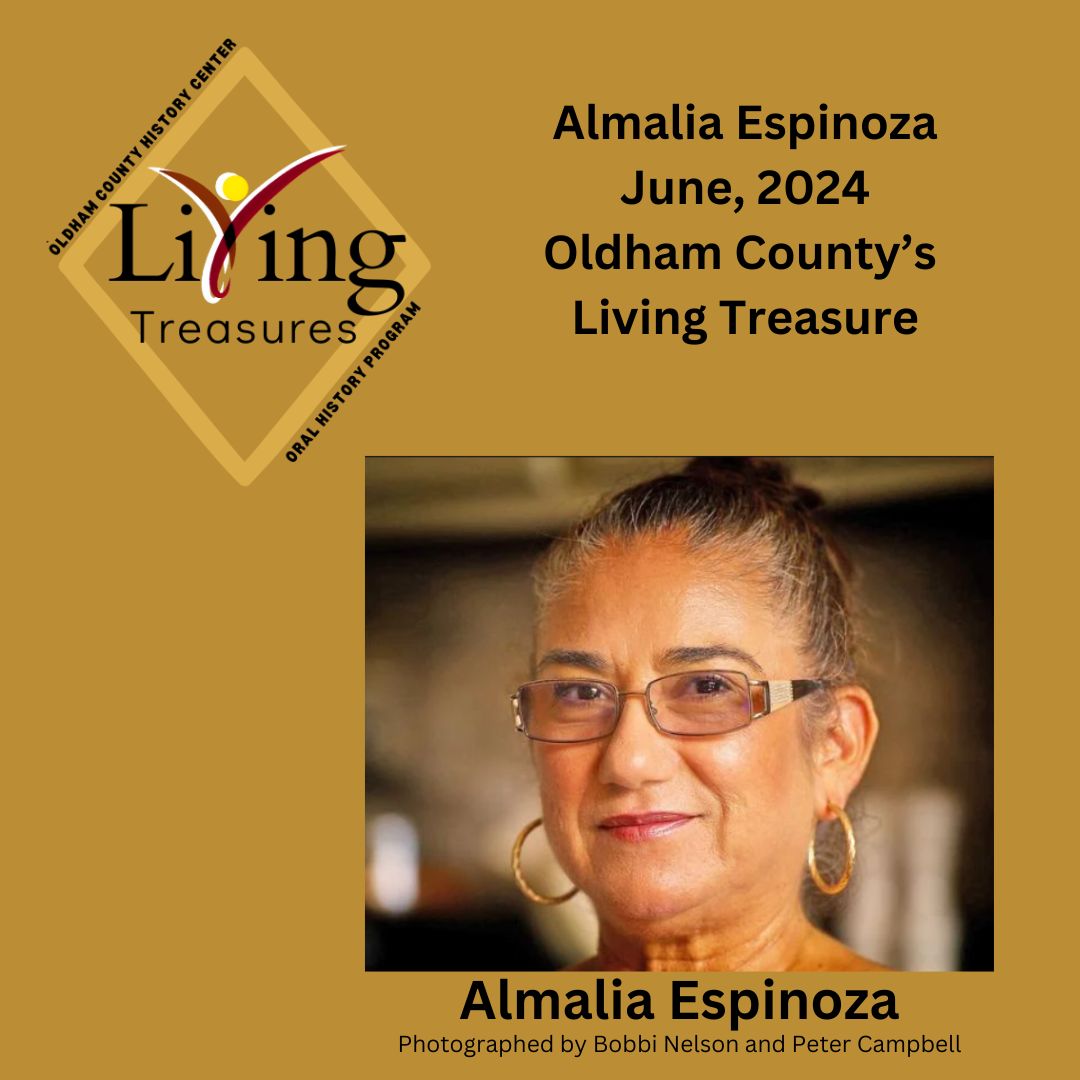
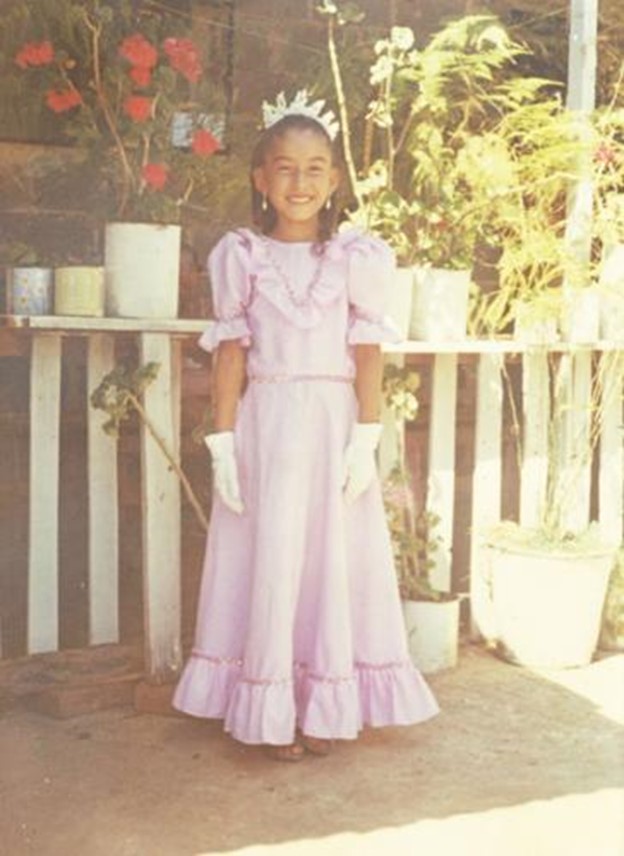
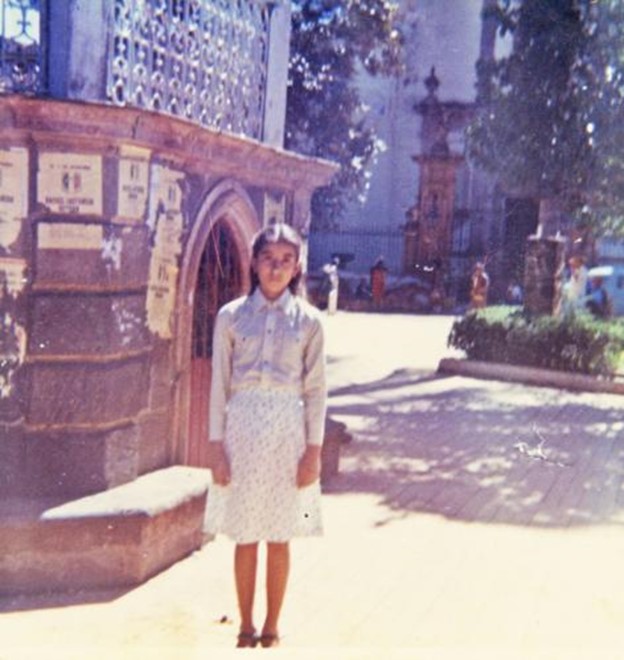
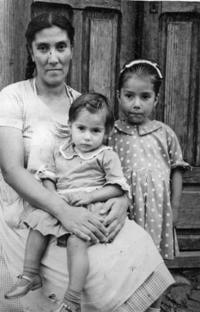 Photographed by: Bobbi Nelson and Peter Campbell
Photographed by: Bobbi Nelson and Peter Campbell
- Jun 21, 2024. Published in the Oldham Era.
For Sept. 16, Mexican Independence Day, we had a parade and did different dances. We did different activities when we were in the parade. The school was in charge of this — every school had a different uniform and color. Most of the time, my school colors were red and white.
Our costumes were made for us — really beautiful. My two sisters and I had long hair and beautiful braids. We got so excited every time, because we wanted to be in the parade. There were 10 children in our family, and we didn’t have a lot of money, so the parades and festivals were big for us.
It was tough on our parents to raise 10 kids in Mexico at that time. Our parents always found ways for us to participate. We lost one of our brothers when he was very young. My sisters and brothers are Ernesto, Evangelina, Maria, Ruben, Rosa, Guadalupe, me, Martina, and Juan Carlos. Mom’s job was taking care of the kids.
The biggest parades were for Sept. 16 for Independence Day, then Nov. 20 is Revolution Day, which is a huge deal. One of our favorite holidays was Los Reyes Magos, which represents the day that the three wise men, Caspar, Melchior and Balthasa, gave gifts to Jesus.
On the night of Jan. 5, we children would put one of our shoes out by our bed and in the morning of Jan. 6, our shoe would have candy in it! We had not heard of Santa Claus.
I never had a doll. We didn’t have toys. We played outside in the mud, or played games. We just played together and with other kids where we lived. We always had something to eat.
Dad raised corn, beans (like pinto beans) and he had cows, so we always had milk. We also had chickens. Mom made cheese and she made tortillas from the corn. Dad always borrowed some land to raise the crops. He also raised sugar cane. There was a sugar mill in town. My Aunt, my mom’s sister, had a lot of coffee trees so we always had coffee. I love coffee! When I was little, I never drank coffee, but I would drink cinnamon tea that my mom would make.
The school was a technical agriculture school. When I went to middle school, I joined the chorus and we participated in competitions with other schools. We won several times. I love to sing.
My whole family would get together and sing and dance. My dad played the guitar. My brother, who has passed, had a really good voice and could play the guitar. Both sides of my family were very musical. We have a nephew today, who can play instruments and has a really, really good voice.
We don’t celebrate birthdays in Mexico. Instead, we celebrate a day for names so I celebrate Amalia Day, which is July 10. Everybody has a special “name” day that you can find on the calendar. There are many names for each day you can chose from, and these names represent special saints and it is called “The Dia de tu Santo.” I was actually born on Dec. 22, but my Dad named me after one of his aunts, Amalia, whose saint day is July 10.
My mom would wake up early in the morning and make fresh tortillas, because we would go with dad to work with the crops. Mom would grind the corn by hand. We shucked the corn using a desgranadora. We would have blisters on our hands from shucking the corn, because it was hard to do. We put the kernels in a sack and store them in the attic or tapanco. When needed, we took the kernels to the local mill to have them ground into cornmeal. We made our own tamales and tortillas.
When I made the corn tortillas, I never added salt to the cornmeal. My dad made a special stool for me to stand on and I would make the tortillas on a “comal,” which is like a large round griddle. I love to make them. I have been making them since I was four. That was my job. When I make flour tortillas I do add salt to the flour. I cook the tortillas on a hot comal without adding any oil to cook them in. We didn’t have any refrigeration, so the tortillas were good for about one day. You never threw out food — you would give leftovers to the chickens or cows.
Our village, Taretan, was in a valley and it was a beautiful place. Everyone knew each other, but when we go back today, there are a lot of people we don’t recognize. The older houses were made of adobe with a dirt floor. Our house had two rooms and a kitchen.
Myself with my two sisters, loved to play basketball. We played in school against other teams. I love basketball! Growing up, most of the girls played basketball or were in track.
Of course, we also had the Day of the Dead Celebration, (Dia De Los Muertos) on Nov. 2. It was a time we went together to the cemetery and there was a big party there — it is really a festival. There is music and mariachi bands. We cook dishes of our loved ones who are buried. The week before, the cemeteries are full of flowers. People spent a whole week decorating the town and the graves. People have altars they create in honor of the deceased, often in the homes. On Nov. 1 is the Day of the Angels, Dia de los Angelitos, and we honor the little ones who died, the kids, and we call them angels.
The cemeteries are different in Mexico. They are big, graves are close to each other, and families have a special area. Like we buried my father and then, a few years later, we buried my mom at the same grave.
I am on the committee at the Oldham County History Center for the Day of the Dead Celebration. Last year, we had a parade, had altars that were decorated and dancers. We are planning a big celebration again at the history center on Nov. 2.
We came to the United States, my twins were three and my other one was two years old, so they don’t remember a lot about Mexico. When we came here, we worked and worked and worked, so didn’t talk about all these traditions, but as adults they love it.
I had a group of friends who I still see from when we played basketball at school. I go back a few times each year to see friends and family. We built a house there, where we stay during the winter. Then we return back to Kentucky for my husband’s landscaping business.
I left high school in the 10th grade, and I went to computer school in a big city, Uruapan, and I commuted to school on a bus. I met my future husband, Jose, when I was 14 years old in 1982. He said he fell in love with me the first day he saw me!
We got married, four years later, when I was 18 in 1986. Soon after, we had twins, a girl and boy, Luis and Maria. They were born when I was seven months pregnant, when we were living in Uruapan. A year later, we had a boy, Carlos! We didn’t have disposable diapers, so I was always washing! We lived in really bad conditions. We lived in a barn and, when it rained, I had to move the furniture because rain was coming through the roof. We had a dirt floor and an outhouse.
We decided to move to the United States to California in a small town, named Delhi. My husband’s uncle could get us jobs working on peach and almond farms, so we decided to try to have a better life. It was difficult to leave most of my family, but it was the price we paid to look for a better life. My brother had also moved to the United States and he thought it would be better for our family to move to the states. We crossed the border with three kids, in a pick-up truck plus my sister. I am thinking there were eight or ten in the truck at Tijuana and took us two or three days. We didn’t have much, maybe backpacks. This was 1990.
I was very excited to get to the United States, thinking it was going to be better. Everything looked so beautiful. But working in the peach and almond fields was so hard. We would sometimes spend 10 hours in the field. Our kids would go to work with us and have to sit out in the fields and play while we worked, because there was no daycare for them until the last year we worked there.
Before the peach trees were ripe, we would sucker out peaches. When they ripened, the men would climb ladders and pick peaches. Then, the women would separate the good from the bad peaches on a large table. I would wear a sombrero and cover my nose and mouth with a bandanna and wear long sleeves, because the peach skin is sticky, fuzzy and very itchy and would get up your nose and all over your skin if you didn’t dress for it.
The living conditions were not good. We had to live for two years in this garage with six other men in the same garage. It was all one big room, and my husband went to the store and bought some wood pieces to make a little room for some privacy for me and the kids. There was one shower for the whole group. There was another family living in the house attached to the garage so we would use that restroom. I would get up at 4 a.m. to make lunch for my husband and the kids. I tell the kids “never forget where we are coming from.” We finally moved into an apartment where we lived for two years, then my brother, who lived in Oldham County, told us to come to Kentucky, which was 1994, and live with him at his home. That was the best thing of my life.
I started cleaning houses and my husband worked for Oldham County Stone. Our kids went to Liberty School. There were so many people who were good to us, like Bob and Becky Fishback. They helped in many ways and got us to go to the Methodist Church, where we met some really nice people. There were really no Hispanic people here at that time. Bob started helping my kids to join soccer clubs. I could not speak English, so the more I became involved in all these activities, the more I could understand and speak. Our kids started playing in travel soccer clubs. Luis and Jose played soccer in college.
Eventually we saved enough money and bought a house. I loved that house! It was small, had three bedrooms and a basement.
In 1997, we had another child, Jose, who went to Trinity High School, then Transylvania and then University of Louisville Law School and became an immigration attorney. Maria went to Oldham County High School, then University of Kentucky and got her master’s at Xavier University in Cincinnati. She works for human resources for Kroger in Cincinnati. Marie’s twin brother, Luis, graduated from U of L in business administration and he works in the landscaping business with my husband. Carlos majored in sociology and works for COSTCO and lives in Connecticut. We have three grandkids. Maria has a boy, Cooper, who is three and a daughter, Chloe Sophia, who is one year old. Our son, Carlos, has a boy, Charlie, who is four.
When 9/11 happened, Jose started mowing lawns, in addition to working for Oldham County Stone. He later developed his landscaping business, J&S Landscaping Company. We made more money and bought the house in Grand Villa in Buckner, where we live now. My husband always wanted to live there — it was a dream for us.
We are so lucky. I always remind my kids to be humble and then never forget where you are coming from. Always put your feet on the ground. My husband and I are blessed with our children. I tell my kids to forgive us for any mistakes we made that we tried our best. We always need to become better everyday and live for the moment.
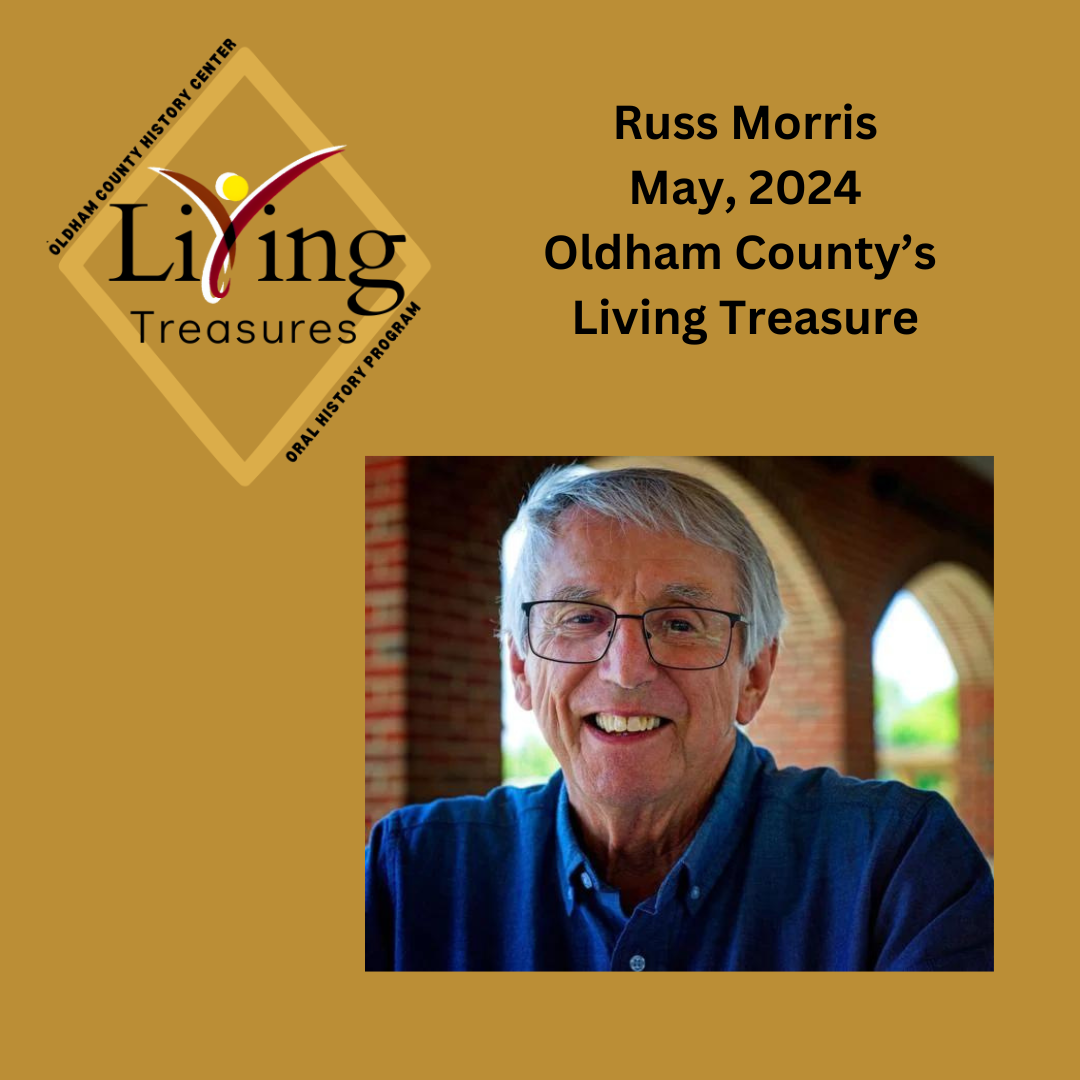
I grew up in South Charleston, West Virginia and was born on Oct. 29, 1942.
We lived in a two-bedroom house, eight of us — three sisters and two brothers. My parents were Lloyd and Catherine McClure Morris. They grew up in Richwood, West Virginia, about 150 miles from Charleston. Dad worked in the clothespin factory. He had an eighth grade education and mom graduated from high school. All of us kids went on to higher education.
They moved to South Charleston before I was born and Dad worked for Union Carbide as a chemical operator until retirement. After we kids grew up, Mom worked in a school cafeteria as a cook. Dad always teased her that she could take a pound of hamburger and make a five-pound meatloaf. It was interesting growing up in a two-bedroom house with three sisters and one bathroom! When Mom took my oldest brother shopping to pick out a suit, I and my other brother would go along to help pick it out, since we knew we would both be wearing it!
Dad was a hunter and fisherman and always took me with him. We had beagles and went squirrel and rabbit hunting. I loved fly fishing as well. Our neighborhood was small, blue-collar workers, with loads of neighborhood friends that I have today. Everyone knew us and, if you got in trouble, your parents knew about it before you got home!
We played a lot of sandlot and T ball. In the summer, Union Carbide sponsored summer camps for employee kids with swimming, craft classes, archery and how to handle a gun. You took a train to get there and then walked a mile to camp “Camelot.”
Dad made us work for our spending money, cutting grass, passing papers, washing windows. Through college, I worked at a jewelry store to cover my tuition. I always wanted to fly, for as young as I could remember. When I was a paperboy, I won a contest and got to ride in a DC3 — that was my prize.
I graduated from high school in 1960, with a class of 500 students. Most went on to college. I went to Morris Harvey College in Charleston and graduated with a degree in management and marketing in 1964. I belonged to Tau Kappa Epsilon fraternity. I knew I would go into the military because it was the pipeline for me being able to fly. I joined the Navy. Back then, they had “dependent” cruises for the family to actually ride on an aircraft carrier. My brother in law, who was a Naval officer, took me along and that locked me to signing with the Navy.
Pam and I were married August 1965. We grew up four blocks from each other and belonged to the same church and attended the same schools. I always teased Pam when I was captain of the patrol at school and told her she wanted my autograph. Back then, patrols helped other kids crossing streets.
After our marriage I started, Naval flight training in Pensacola, Florida and got my wings in 1966. I started with primary flight training on a T-34, then basic in a T-28 with just two people, instructor and student. I loved it. I never got sick flying. The training that you got was amazing, and you learned how to handle the aircraft.
Next came instrument flying (a whole different world). You have no visual reference to the outside, and you are strictly looking at your instrument panel for reference. If you look around, you induce vertigo.
My next training was landings on aircraft carriers. I made six touch and goes and then six trap landings (a sudden stop), which was exhilarating. You catch the wire and then “WOW.”
You have a landing signal officer to help guide you down with the landing. If you miss the wire, the signal officer would wave you off to go around. I probably had 200 flight hours by that time, so you know the airplane and how to fly. After primary and basic training, you were given three choices, helicopters multi-engine or jets. I selected helicopters.
I really thought I could fly and I started with a Bell-H13 (a little bubble), but I could hardly keep it in a hover. It required a lot of different input to make the helicopter fly, but learn I did.
I transitioned to an H34 and received my Naval Aviator Wings in 1966. From there, I received orders to Helicopter Squadron 6, based in San Diego, California. Their primary mission at that time was anti-submarine. The crew consisted of a pilot and co-pilot and two sonar operators. We searched for submarines using sonar and listening for noise. The interesting thing is the Russians subs were very noisy and easier to track! For one of their defenses, a submarine will try to find different layers of temperature in the water, because sonar will bounce off colder water. Never engaged, we practiced!
1967 was our first tour in Vietnam, with lots of different tasks for our helicopters. We did search and rescue in North Vietnam, along with personnel transfers, mail delivery and, on Sundays, Holy Helio, taking a chaplain to various ships for services.
Our secondary mission was search and rescue in support of bombing strikes into North Vietnam. We were on standby to rescue a pilot who was shot down. Should the call come, we evaluated what was going on as a rescue mission. The Navy and Air Force were both involved in the evaluation. In a rescue, the downed pilot had an emergency radio so you could home in on to pin point their position.
Thankfully, we were based aboard an aircraft carrier and came back to our ship and had nice meals and a place to sleep, easier than the Marines and Army. For our R&R, we spent time in the Philippines, Japan or Hong Kong. We had machine guns on board, if needed, and we took ground fire during the rescue attempt. I went in one time, but, unfortunately, the pilot was captured. We came back really disappointed and it hurt. Our squadron had the most successful rate at extracting pilots.
I did 25 combat missions and received an Air Medal. I was co-pilot at that time but, on my second tour, I was aircraft commander and had my own crew. We had 20 helicopters and six were designated search and rescue only. Our squadron did not lose one helicopter, unlike another squadron that lost 12. You had to be on your game!
My first cruise in Vietnam in 1967 was scheduled to last eight months, but was extended to 11 months. That was when the North Koreans captured the USS Pueblo (1968). We went from the Gulf of Tonkin to the Sea of Japan (90 degrees to 40 below) in a span of three days. Then we came home for eight months and then our second tour started. A lot had changed in Vietnam. It had gotten political, going from a war where generals and admirals had authority to do what was needed, to politicians running the show — totally different!
During my second deployment (second cruise) June 3, 1969, there was a major collision between the USS Frank E. Evans and the Royal Australian Navy Aircraft Carrier HMAS Melbourne. The ships were participating in SEATO exercises, when the Evans was cut in half. We launched for search and rescue (we were the first aircraft there), but 76 sailors were lost in that collision. I had grabbed my camera and I have pictures of the destruction. I came back from those two tours and got out of the service in 1970.
We moved back to South Charleston, West Virginia. At that time, a coal company was starting a helicopter service and I was once again flying — charter work and flying personnel. We expanded to turbine-powered helicopters and I became manager. Later, it was purchased by a larger corporation and Helicopter Elite Services expanded. We maintained a repair station, maintaining our seven helicopters and other companies servicing the coal industry in West Virginia and eastern Kentucky.
I only had one bad experience, which occurred under heavy wet snow, very mountainous, and knew we couldn’t make it to the coal mine and had to land. As we were transitioning to a hover at the local airport, the engine flamed out and we did a hovering autorotation. Thankfully, the airport was close by the mine. Flying in the area, you had to watch for power lines, gusty winds and low visibility, along with stirring up a dust cloud when landing.
We lived in South Charleston and on a farm, having a garden and a few cattle. My Dad told me that he never thought I would be a farmer. We have two daughters, Shannon, born in 1969, and Whitney, born in 1972. We lost our newborn son Sean in 1987,after a premature birth.
I accepted a position with AIRWORK Corporation, located in Vineland, New Jersey, in 1981 and moved my family. I was hired as the service center manager. My career there includes being the general sales manager and PT-6 engine program manager. AIRWORK Corporation was a Jet Engine repair and overhaul company that serviced corporate aircraft engines.
Our daughters decided to attend Midway College, with Shannon studying equine science and Whitney studying early childhood education. They both settled in the Louisville and La Grange area. At that time, I was getting burned out with my program director job and requested a regional sales manager job in Louisville and here we are. Pam and I found a home in La Grange in 1997 and been there ever since. I left that position in 2008 and started managing the La Grange Farmers Market.
The Farmers Market started in 2004 under the La Grange Main Street Program. In 2008, they were looking for a market manager and I said, “Why not?” It is a lot of fun and challenging. Seeing the success of these vendors is very rewarding, with some going on to open a storefront.
We have been very fortunate to have a covered pavilion at the new La Grange Springs Park. It is so nice to have a downtown park. We received a $250,000 KADF matching grant to help offset the cost of the pavilion. We had 41 market events last year, each being held on Saturday morning or Tuesday evening. We certainly try to have a diverse product line, since Kentucky doesn’t have a year-round season for produce.
We are a Kentucky Proud Market, with 54 Vendors. It is really nice to see young farmers keeping the local farms operational. One thing I have noticed is that some people don’t realize the state has a season for growing produce. You can’t expect local corn and tomatoes in April, May or early June
We don’t allow our vendors to resell products from local wholesale produce markets. This has taught us that we need to educate our customers. You might not realize, but all of our produce is grown locally within the Commonwealth of Kentucky. Every season, we have new vendors wanting to join our market and, hopefully, we can expand to accommodate the demand.
I am also involved with the La Grange Main Street Program as vice president and treasurer. I have been associated with the program since 2008, also serving on various committees. Our program is helping to preserve the historic district, which houses many wonderful businesses on Main Street. The many events that the Main Street Program sponsors help maintain a viable community.
I think that it is important, particularly as I have gotten older, to keep going. One still has a lot to offer to our community with one’s experiences. I have my hobbies and Pam and I enjoy our six grandchildren. I like what Clint Eastwood said, “Every day, when I wake up, I don’t let the Old Man in.”
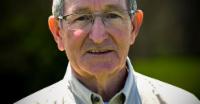
Steve Greenwell – April 2024 Living Treasure
My Dad, a WWII vet and a farmer, moved my family to Oldham County on Valentine’s Day in 1953 to manage Spring Hill Farm. He moved my Mom, older sister and brother to Ballardsville, and then I was born Aug. 1, 1953. Sharon and Rick, are my oldest sister and brother. I also have a younger sister and brother, Mercy and Jeff. My sister who is the oldest is nine years older than me, and my younger brother is nine years younger than me.
My mom, Mary Russell Greenwell, and dad, Richard, are both from Raywick, in Marion County, a Catholic community. We all went to Immaculate Conception Church where there were 60 families, which has now grown to over 500 families. It is a beautiful church. I also went to school there, grades 1-8. There were 10 kids in my first-grade class and by eighth grade there were only five kids. In ninth grade I went to Oldham County Junior High with around 500 kids. I was in culture shock.
Spring Hill Farm is on South Hwy. 53, two miles from Ballardsville. It is a 900-acre farm that was owned by the Veeneman family who lived in Louisville. When Dad began work there, it was a beef cattle, sheep and tobacco farm. Our house was built for a previous farm manager in 1948 so it was a fairly new house. There were four or five other people that worked on the farm. We had 180 beef cows, 125 ewes, a few meat hogs and 10 acres of tobacco. We sheared the sheep in the spring. We hired men from Ohio to shear them. We would stuff the wool in bags, eight or nine feet tall. We took the bags down to Louisville to sell. The men that sheared them were amazing to watch. They would set the sheep back on their tail and shear them in about three to five minutes. It was a back breaking job. I have done it and it is hard work. At the time, Oldham County was a big sheep county.
One time, our family went to New York to visit relatives. My brother Rick stayed home to watch over the farm and during the night two neighbor dogs killed 50 sheep! We confronted the neighbor who owned the dogs. He said he would take care of it, and he did.
There were also wild dogs back then that were extremely dangerous and ran in packs. They were dogs that people dropped and then had pups. That was a serious problem until coyotes came and cleaned that up. I went back on the farm one time to check a cow I heard bawling in distress because she got stuck in the mud. A pack of dogs were circling her, trying to get her. I had a rifle and went over the crest of the hill and they saw me and came after me. I shot one and the others ran off. Those packs were really dangerous.
I was on the volunteer fire department in Ballardsville. Dad was a member so I always went to the meetings and when I was old enough I became a volunteer. Ballardsville was a very small community of mainly farmers and people took care of each other. There were three country stores, one was also a garage. Ballardsville had an elementary school through the eighth grade.
We grew up with horses. Mr. Veeneman had racehorses and they would bring them out to the farm. We turned them into cattle horses. With 900 acres and over 100 cows, we would work cattle with the horses. They are hard to ride with cattle, they have a terrible gallop and you have to constantly post in the stirrups to keep your bottom from getting sore.
Spring Hill Farm is called that for a reason. There were springs and a few lakes. We did not have city water on the farm, so we had cisterns. We conserved our water and sometimes we had to order water. Ralph Waits and Joel Adams would deliver water when we needed it.
We started out with horned Herefords but later on when the Hamilton family bought the farm in 1971, we tried exotic breeds from France and Italy but then went back to Angus because of calving difficulties. The cattle had free range of the farm and we had a fence around the house to keep the cows out of the yard.
I wasn’t a good swimmer and in fact I almost drowned in Floyd’s Fork. We were irrigating tobacco and had an irrigation pump in the creek to pump water to tobacco. My brother and I were in Floyd’s Fork swimming around and I stepped off a drop off and went in over my head. This older guy who worked for us saw me, and then Rick saw me and here they came! Floyd’s Fork is a big creek and would flood almost every spring. People would fish it and catch some nice size fish. I made a raft from a barn door! I was Tom Sawyer. One of the guys on the farm hauled the door down there for me. There were large sand bars and islands in that creek, you couldn’t go more than a quarter of a mile.
In ninth grade I was able to take vocational ag classes. Osborne Byrd was my first ag teacher and Gary Roman was the FFA teacher. My dad was a farm manager and it seemed like a good life, so when I went to UK I majored in agriculture and animal science. Mr. Hamilton encouraged me to come back and work for him as assistant manager. He purchased 1,140 acres, which was Fox Den Farm, off Sligo Road and had been part of Ashbourne Farm. We grew a lot of crops over there. I graduated in 1976, which is the year Karen and I got married.
Karen and I had algebra class together in ninth grade. I remember her red hair and she remembered me because I had a “green” hand. When you got in the vocational ag program, as an initiation, they dyed your hand green which took a week to wear off! I played sports in high school. When I was a sophomore on the football team in 1968, that was the year they dedicated Bell Field. It was named for William Bell, a teacher and coach who died tragically in a train accident.
I started dating Karen when she was in the Oldham County Fair beauty pageant. Dennis Roberts, a friend of mine, asked me if I would be an escort for her in the pageant. She came in as first runner up. After that, we dated six years, got married and have been together ever since. Karen grew up in Crestwood. Her mom and dad, the Brockmans, were awesome people. Her mom was from England. Her dad was in WWII when they met in England, and they corresponded for several years after the war. Then, he went back to England, and they got married. Her mom was from Nottingham, England, where Robin Hood was from!
We got married on July 24, 1976 at Immaculate Conception and went to Jenny Wiley State Park for our honeymoon. After Karen and I got married, Mr. Hamilton built us a 2,000 square foot home where we lived with our boys for 27 years! I can’t say enough for how generous the Hamilton family were to us and the boys. Karen graduated from Georgetown College and majored in interior design and home economics, so Mr. Hamilton let her design our home.
At college I lived and worked on Coldstream Farm, which was owned by UK. I learned as much working on that farm as I did from the classes I took. I had to work at least eight hours a week for room and board. I had two fantastic bosses at Coldstream, one was head of the sheep program and the other head of the beef program. They also had a dairy, hog, horse and agronomy department. Coldstream is where Derby winner Aristides was from. Main Chance Farm and Spindletop are also part of the UK ag program. UK is a land grant college and the extension service was set up there. Spindletop Farm was donated to UK.
In 1985 we bought our first ATV, which replaced the horses. But cows don’t respect an ATV like a horse and they will jump right over them. Cows wouldn’t dare go up against a horse. I was heading this bull one time, and he went head-to-head with me for about 100 yards and he had enough and actually jumped over me, putting a dent in the gas tank. It was a close call.
Mr. Hamilton decided to get into the hog business for more income. Initially we built two hog houses and started with feeder pigs at 50 lbs. and sold them at 250 lbs. Then we added more houses with 400 hogs in each and ended up with eight hog houses holding 3,200 hogs total. We would turn them 2 ½ times a year and became one of the largest hog producers in the state. I became a member of OC Farm Bureau, Conservation District and Falls City Pork Producers Association. The Pork Producers Association’s purpose was to promote our product. We became famous for our pork chop sandwiches and dinners at the Ky. State Fair. We promoted pork and people loved it.
We tried to raise as many crops as we could to feed the pigs. We raised 600 acres of corn every year on the Fox Den farm. We contracted with a feed company that delivered 20 tons of feed every two weeks. We had to grind 64 tons of feed a week to feed the hogs. It took 3 ½ days to grind all that feed every week. We spread one million gallons a year of liquid manure that we had to pump out on the fields. It got to be such a big job we rented equipment. We fed our last hogs in 1996. We couldn’t find enough feeder pigs and we didn’t want to go into the breeding business.
We were raising Angus cattle at the same time so we were putting up a lot of hay. I loved it when we went to round bales instead of square bales- made life so much easier! We had 250 cows at Fox Den and 250 at Spring Hill. In the winter we had 500 calves that we fed silage. Our standard work week was 55 hours but sometimes during planting time you might work 18 hours a day putting up hay to beat the rain. Josh and Stephen, our sons, and their friends would often work in the summertime to help put up hay.
I ran for magistrate when my friend Hartley Winters decided not to run again. I ran and won and held the office from 2003 and served five terms, retiring in 2022. I was chairman of the road committee for 16 years. As subdivision numbers grew, roads and maintenance became a major issue. For instance, garbage trucks were really tearing up the roads because we had three different garbage companies picking up trash in a subdivision. Three large trucks a week tore up the roads so we went to one garbage company that drove through once a week.
In 2011 I became a school bus driver and did that for 12 years. I enjoyed the kids and had a Crestwood route. Once I was stopped at a stop sign on Hwy. 329 and a car slammed into my bus. I couldn’t do anything about it. Fortunately, everyone was fine, even the driver of the other car. People came from maintenance, bus driver friends, police, a lot of folks to check on me, and the students. They bought me a sub bus and I delivered them all to school. The buses kept getting bigger each year. The last bus I had held 78 kids. We had around 100 buses.
In 1991 Vernon Hodge bought the farm and sold it in 2019. Karen and I bought 15 acres from the Hodge family and built our home. For that opportunity we are very thankful. I bought some cows and now have 30 cows! I also work part time at a farm in Goshen.
We have two sons. Josh was born in 1977 and Stephen was born in 1980. Both went to Immaculate Conception and OCHS. Josh is a natural farmer, but Stephen’s talents lie elsewhere. Josh and his wife, Jenny, have two daughters and live in Bowling Green. Ali is 17 and Mia is 14. Stephen and his wife, Lindsay, live in Richmond, Ky. and they both work for EKU. Their son, Brock, who is 15, plays soccer. It’s great when we can all get together!
Oldham County has changed dramatically over my lifetime. This has always been my home and I love the community. Karen and I have had a wonderful life and church community here. I was born in St. Anthony’s Hospital in Louisville. When people ask where I was born, I say in Louisville, but I got here as fast as I could!
Honoring Our Mentors: The Living Treasures Project
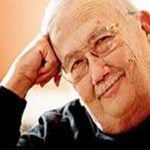 In 2007 The Oldham Era and Oldham County History Center launched The Living Treasures Program that publicly recognizes people who have generously served our community with kind hearts and good deeds. Their oral histories and photographs are recorded, archived and made available to the public at the Oldham County History Center. We also have an extension collection of Veterans Oral Histories!
In 2007 The Oldham Era and Oldham County History Center launched The Living Treasures Program that publicly recognizes people who have generously served our community with kind hearts and good deeds. Their oral histories and photographs are recorded, archived and made available to the public at the Oldham County History Center. We also have an extension collection of Veterans Oral Histories!
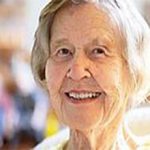 Each month a nominee is selected and featured in a one page spread in the Oldham Era which is a local newspaper in Oldham County. Eleven nominees are selected and then honored in a January reception at the Oldham County History Center.
Each month a nominee is selected and featured in a one page spread in the Oldham Era which is a local newspaper in Oldham County. Eleven nominees are selected and then honored in a January reception at the Oldham County History Center.

The Living Treasures program in Oldham County is modeled after the New Mexico Living Treasures Program that was founded by peace activist and minister Mary Lou Cook, along with friends, in Santa Fe, New Mexico in 1984. Inspired by Gandhi’s advice, ‘You must be the change you wish to see in the world,’ the group wanted to do something that wasn’t being done- express appreciation for the important contributions of our Elders. Modeled after traditions from Japan, it is a simple concept of honoring those who make a difference in our communities. We’re working on uploading them all. Check back for more oral history!
- Nancy Oglesby
- Leta Barrow
- Ollie Howard
- Johnny Glauber
Nominate an Oldham Living Treasure
To qualify for nomination the nominee must have some connection with Oldham County- either as a past or current resident or native of the area. The nominee should demonstrate qualities such as civility, respect, authenticity, spirit, continuity, integrity, peace, inspiration, kindness, simplicity, wisdom, courage, serenity and love. Submit a letter, 300-500 words, describing why the nominee should be a Living Treasure recipient. There is no age requirement for this program-it covers a wide range of ages focusing on mentorship and example of the individual. Email us or mail the letter to: Living Treasure, Oldham County History Center, 106 N. Second Ave., LaGrange, KY 40031
